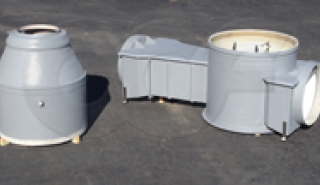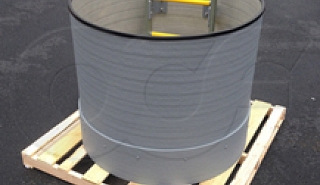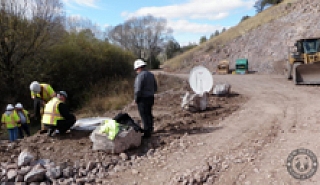One of the primary advantaged of fiberglass flow metering manholes is the ability to accommodate flumes much larger than will fit inside the manhole. By being able to laminate the flume to the manhole barrel, flumes can readily extend upstream / downstream of the manhole barrel without a problem.
Unfortunately there are times when a combination of manhole depth and flume length necessitates that the manhole be shipping in two pieces. When this happens the problem then arises of how to secure the two sections of manhole barrel together so that the connection is watertight.
The traditional method of securing the two manhole sections has been an out-turned flange on each manhole section between which caulk is applied. The problem has been ensuring that the caulk is well distributed over the entire connection area and the time required to install the connection hardware in the proper order / torque. Inadequate bolting and poorly distributed caulking can both lead to leaks as the backfill soil settles.
A new method of making the connection using has recently been adopted by Openchannelflow. Using a specially formed channel on the base section of the manhole, a specialty adhesive can be used to make a void free join between the upper and lower manhole section – ensuring a watertight connection. Here a channel is factory laminated to the manhole barrel for the upper section of manhole to nest into and to contain the adhesive compound.
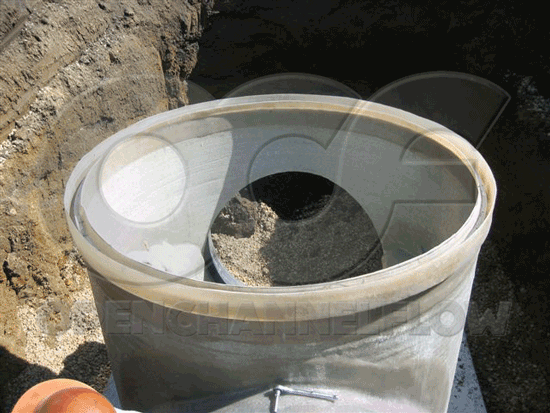
On site, the base structure of the manhole is set on a concrete pad as usual. This base structure includes both the flume and the manhole barrel section containing the adhesive channel. The upper section of manhole is then lowered into place – securely nesting in the adhesive channel. Boxes of the factory-supplied adhesive are then prepped and poured into the adhesive channel. As the adhesive cures, the flume can be connected to the upsteam / downstream pipe and the manhole secured to the concrete slab as usual. In warm weather, curing takes place in as little as 15 minutes. Once cured, the adhesive chemically bonds to the manhole wall creating the watertight seal and excavation can then be backfilled.
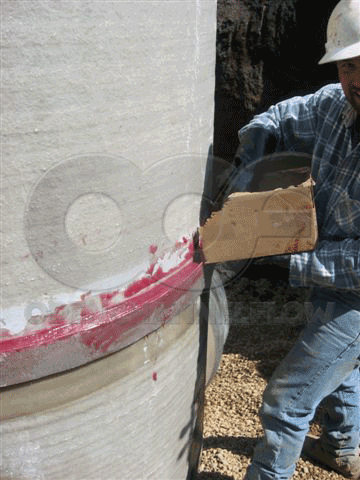
By utilizing an external fill channel for the adhesive to be poured into, the installer can visually verify that there is a continuous fill of material in the channel. Any voids or areas where the adhesive is not deep enough can be readily identified and corrected before curing takes place. This contrasts with the standard method of caulking between flanges, where one hopes that a sufficient amount of caulk has spread and that there are no areas where the caulk is thin or missing.


